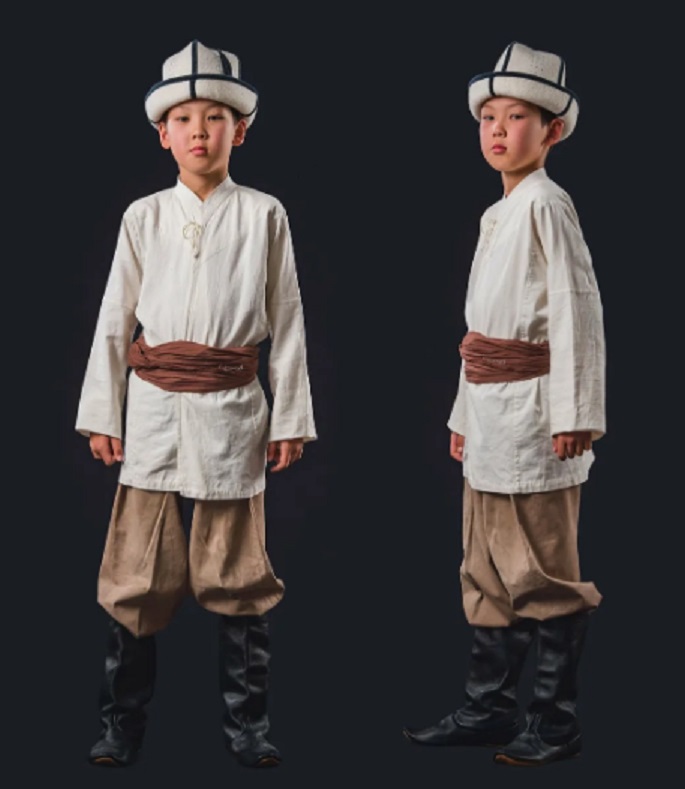
The main items of men's undergarments in the 19th century among the Kyrgyz were the open shirt and trousers. The open shirt — jegde (Fig. 133, a) was usually made from white calico or mat. Its cut was tunic-like. Slightly flared wedges were sewn onto the side edges. The length of the shirt was below the knees, and the sleeves covered the wrists. It was customary to sew in gussets (keshtak). The open collar was trimmed with a band that narrowed at the chest and was fastened with cords or buttons. The "jegde" was worn from the age of six or seven and retained its shape for life. The shirt was belted and worn over the trousers.
In the costume of the older generation in the western regions of the area, the open shirt is still in use today. In the past, it was characteristic of northern Kyrgyz, where it was called aichik keynek (open shirt) and was made with a laid-down or low standing collar. In the 1930s, as researchers note, its cut was already disappearing. The open cut of the shirts resembles the light Uzbek and Tajik robe — yakhtak.
The open shirt was also characteristic of the Kyrgyz costume in Eastern Turkestan, as well as among the Uyghurs.
The deep tradition of wearing the open shirt by the Kyrgyz is evidenced by the funeral rite. To this day, there is a custom to dress the deceased in a piece cut from the shroud, measuring from the shoulders to the knees. This garment is called "jegde".
Since the early 20th century, among the Kyrgyz, as well as other peoples of the Fergana Valley, the shirt with a cut-out collar (30-35 cm deep) in a triangular shape (uzun jaka — long collar) has become widely popular. The cut of the collar is trimmed with a strip of fabric and stitched with a close machine stitch. The cut of the shirt remains the same as the open one, but the length is shortened to the hips. The sleeves are also made shorter (Fig. 133, b).
At the same time, shirts of a similar cut, but with a closed collar in the form of a narrow stand (2.5-3 cm) and a small slit on the chest, covered with a band; fastened with buttons (Fig. 133, c) have become widespread.

Shirts of this shape are now the main ones. They are sewn by the wearers themselves (always from white fabric) or purchased from the store.
In characterizing men's undergarments in the past, one cannot overlook the tunic-like shirt with a horizontal collar slit (tuura jaka kvynak — shirt with a straight collar) with ties or buttons on the shoulders. Such shirts were worn by boys as early as the beginning of the 20th century before they were given the open "jegde". In the clergy's costume, a shirt with a horizontal or slightly rounded collar line, usually trimmed with an ornamented strip, is still in use today under the name mullacha. Whether adult men wore shirts with a horizontal collar slit is not preserved in popular memory. However, the presence of this in children's costumes, which usually replicate the costumes of the elders, allows us to assume that adults in the past also wore shirts of this type.
Clothing of the Southern Kyrgyz. Part - 2













































